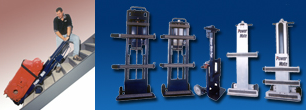The value of a good ergonomics strategy goes beyond health and safety. A good ergonomics strategy can add value to your company’s business and ultimately contribute to your goals of higher profits. An ergonomics strategy can affect profit drivers like cost minimization, productivity, quality, delivery reliability, responsiveness to customer demands and flexibility. The evidence for a good ergonomics strategy is abundant in countless studies in North America and Europe that clearly illustrate the connection between profitability and healthy working conditions. Larger organizations take ergonomics seriously and have been at this game long enough to know where to look for ‘bottom line’ benefits.
The trick to making ergonomics work for your business is to look for items that contribute to business performance and that also carry inherent risk. In terms of business performance, this means looking at risk and assessing opportunity. One aspect of ergonomics that enhances efficiency is mechanization. If the job carries risk for a human operator, (and the associated cost of a lost-time injury) then look to mechanization to lower risk. By removing hazard in the workplace (or substantially reducing it) you increase labor productivity, lower costs associated with injury and increase your profit.
Moving heavy hot water heaters, boilers and other goods is inherently hazardous due to the real potential for lifting strain. A back injury can put a good worker out of commission, permanently in some cases. Even strong young backs will suffer over time with repetitive exposure to the same types of strain. Really heavy loads often require more bodies to move safely. If these loads were confined to the factory floor no one would be lifting them using brute strength alone, this risk of injury is too obvious. So why do contractors expose themselves to such risk day in and day out?
The solution to this particular risk is to mechanize the process with a powered hand truck like a PowerMate. The business benefits are many; reduced exposure to risk for your installers (and the reduced costs associated with lost-time injury), labor savings, increased productivity and higher profits. Tom Webber of T. Webber Plumbing, Heating & Air Conditioning explains, "Since time is money in our business (the PowerMate) has allowed us to get these heavy objects in and out of jobsites as quickly as possible. This has led to increased revenue and better job efficiency. Now instead of sending two technicians to move an old boiler or set a new one in place we only send one. Not only is management happy about this change but he technicians are as well."
In terms of ergonomic strategy, acquiring a PowerMate makes perfect sense if you move heavy objects in and out of buildings as part of your business model. The people that move those goods are often your technicians and they have value beyond being just movers.
Peter Jeavons, Director,
L P International Inc.



